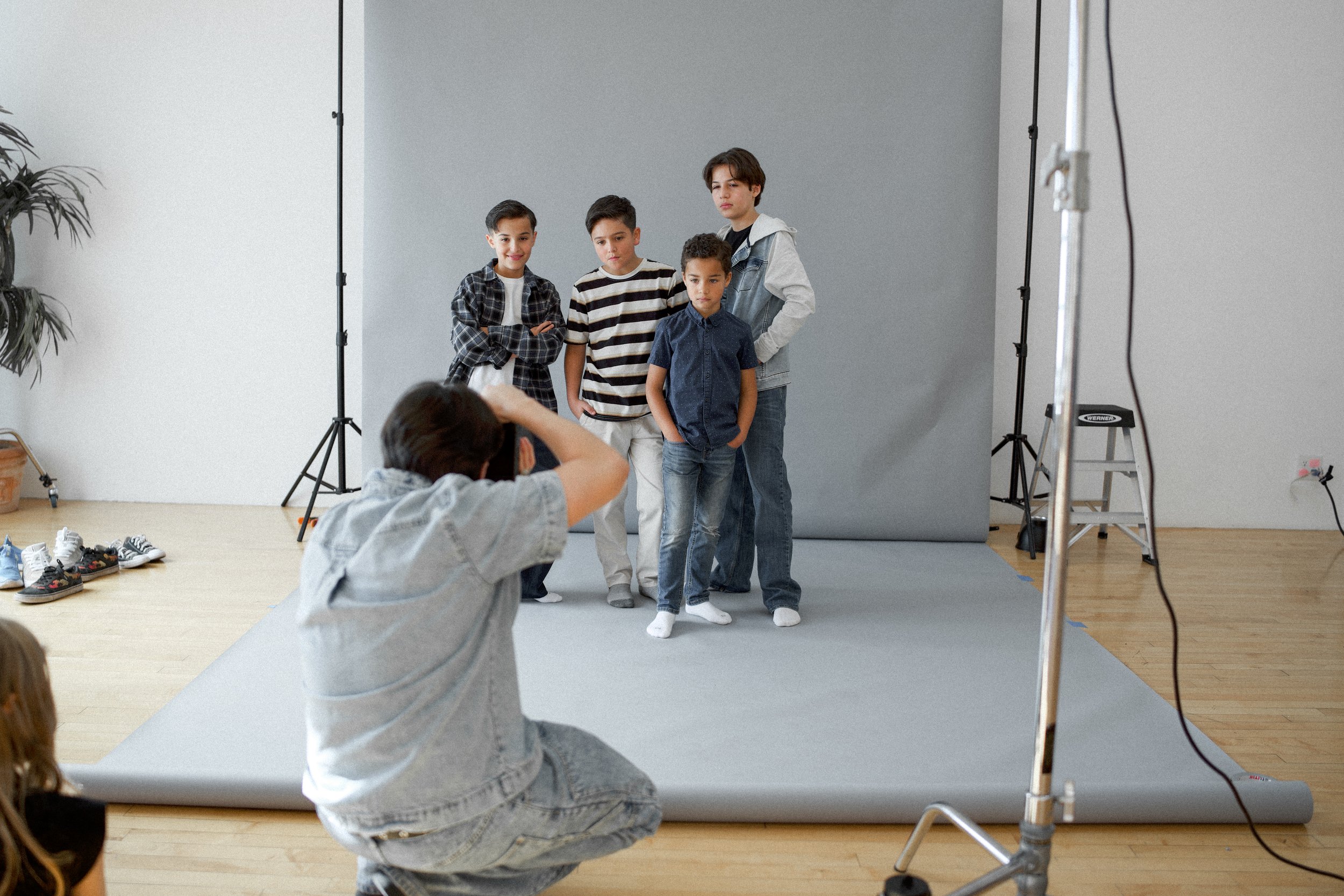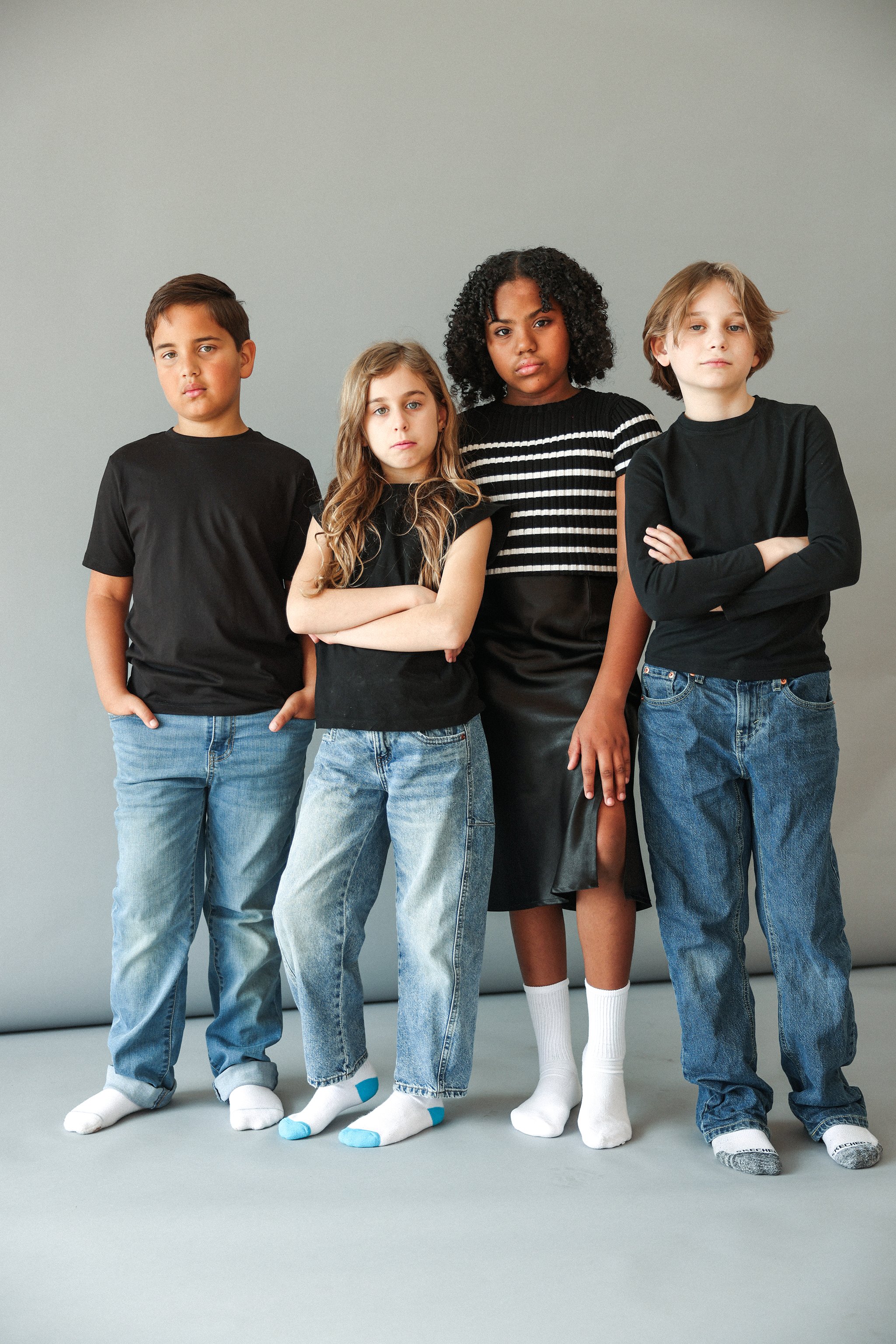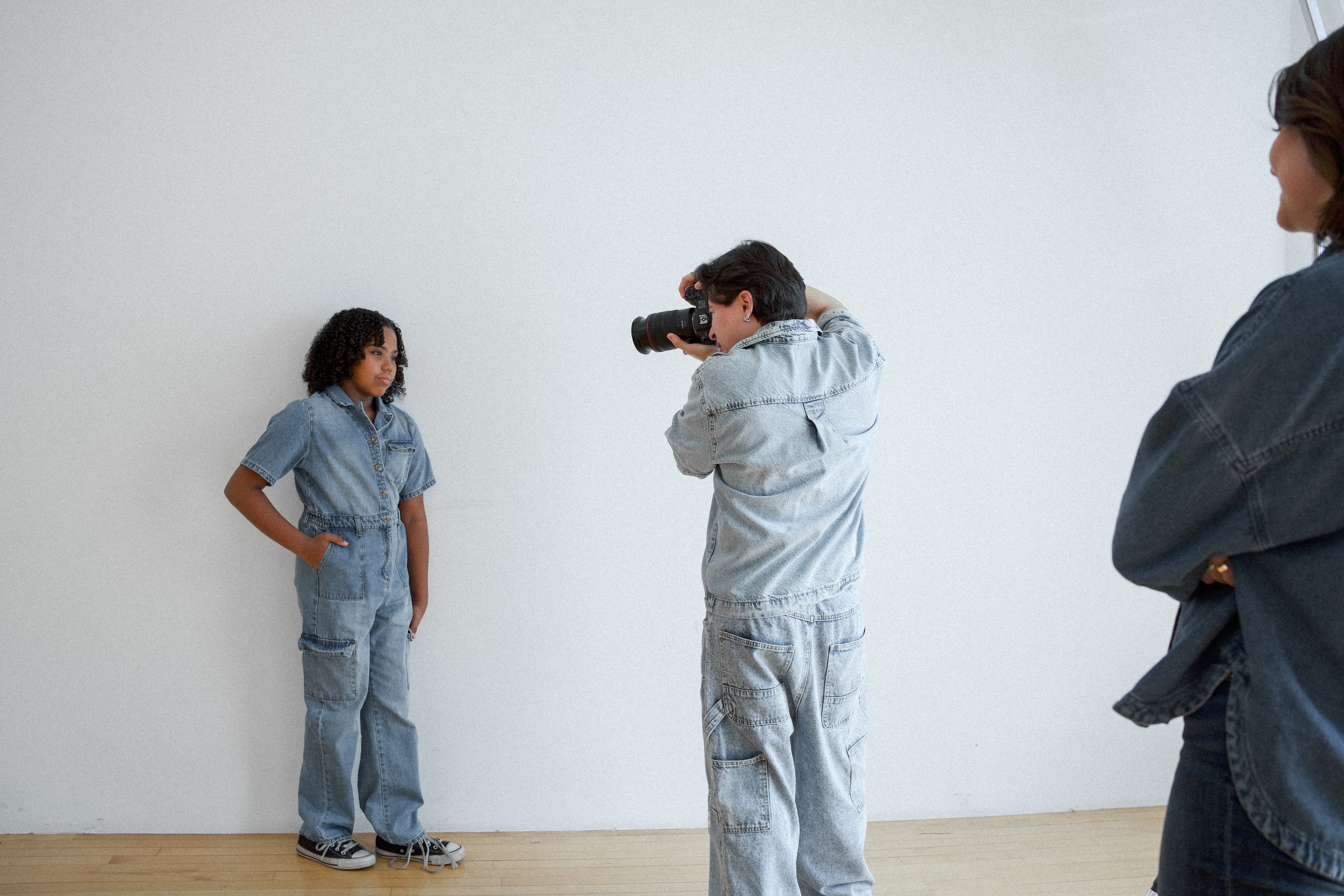How to Get Started in Child Modeling
If you're considering getting your child into modeling, it's vital to understand the steps involved. Start by exploring different types of child modeling to see where your child might fit best. Research credible agencies that focus on child welfare and avoid those that charge upfront fees. Preparing a strong portfolio is important, and knowing how to maneuver casting calls will help you gain valuable experience. Next, you'll want to examine safety on set and manage expectations in this competitive industry.
Now let's go deeper into each of these essential steps to ensure your child's success and well-being in the modeling world.
Key Takeaways
Research reputable modeling agencies that have positive reviews and do not require upfront fees for representation.
Prepare a child's portfolio with professional headshots, including smiling and neutral expressions, to showcase their unique personality.
Attend open casting calls to gain exposure and experience in the modeling industry.
Focus on making modeling a fun experience for the child, prioritizing enjoyment over financial gains.
Ensure the chosen agency emphasizes the emotional well-being and development of young models.
Different Types of Child Modeling
When you start exploring child modeling, it's important to understand the different types available.
The child modeling industry includes commercial print modeling, where kids appear in magazines and catalogs, showcasing products in a relatable way.
Then there's editorial modeling, which emphasizes artistic and high-fashion photo shoots, often found in upscale magazines.
Kids modeling also extends to TV, with opportunities in commercials and promotional videos.
Fashion runways provide a platform for older child models to present clothing lines during shows.
Additionally, social media modeling has emerged, allowing children to collaborate with brands for sponsored content, sometimes leading to influencer roles.
Each type has unique demands, so knowing your options helps you traverse the modeling landscape effectively, making it essential to understand the different types of modeling opportunities available.
Assessing Your Child's Fit for Modeling
Understanding the various types of child modeling sets the stage for determining if your child is a good fit for this industry. Start by evaluating your child's personality and temperament. Calmness and ease with unfamiliar faces are essential, especially for younger children.
For older kids, cooperation and the ability to follow directions are important; they should be polite and comfortable with strangers. A fun modeling experience is crucial, as discomfort can signal a poor fit.
Observe your child's social interaction skills; being comfortable meeting new people improves their engagement on set. Finally, assess their emotional readiness for industry pressures. Interest and enthusiasm are significant indicators, as each child develops at their own pace in the modeling world.
Getting Your Child Started in Modeling
So, how do you get your child started in modeling?
First, research reputable child agencies that don't require upfront fees and have positive reviews from other parents. This guarantees safety and reliability.
Next, prepare your child's portfolio with recent professional headshots, including two headshots and two full-length body shots that highlight their personality and versatility.
Regularly attend open casting calls and auditions to gain exposure and experience; this will increase your chances of getting noticed by agents or clients.
Encourage your child to focus on having fun during the process and building confidence, rather than just financial gain. Additionally, ensure that the agency you choose has a strong commitment to child welfare, which is essential for a supportive modeling environment.
Finally, be patient and manage expectations, as responses from legitimate agencies can take time, and significant earnings are rare early on.
What Age Should My Child Start Modeling?
When should you consider letting your child start modeling? The ideal starting age varies, as it depends on your child's individual development and emotional readiness. Some children might begin as young as two, while others may not feel ready until their teens.
Professional agencies often accept models as young as three months, opening up early modeling opportunities. However, it's crucial to verify your child is comfortable meeting new people and can handle the pressures of the industry.
Modeling schools and workshops can help by offering programs that encourage confidence and social skills. Ultimately, focus on whether your child shows genuine interest in a child modeling career, making certain the experience remains enjoyable and fulfilling for them.
Importance of Professional Headshots
Professional headshots play a crucial role in your child's modeling journey, acting as the first impression that potential agencies and clients will see. These images illustrate your child's unique personality and help establish their modeling identity.
Agencies typically prefer well-lit headshots taken in natural settings, as they highlight your child's features without distractions. It's important to have two types of headshots: one with a genuine smile and another with a neutral expression, presenting versatility.
Quality photography can greatly influence your child's chances of being selected for modeling jobs, since agents often evaluate the professionalism of submitted images. Many agencies provide lists of trusted photographers, ensuring you can access quality services catering specifically to children's modeling needs. Additionally, high-quality headshots can significantly impact casting opportunities, making it essential to invest in professional photography.
Does your child need professional headshots or help building your their portfolio?
Click below and find out how I can help your child’s modeling career.
Finding a Reputable Modeling Agency
How can you guarantee that your child finds a reputable modeling agency? Start by researching agencies thoroughly.
Check their social media presence, client roster, and industry reviews to confirm credibility. Look for agencies that don't require upfront fees; legitimate ones typically earn commissions from jobs secured for models.
Read parent reviews on Google and Yelp to gauge others' experiences and spot potential red flags. Verifying an agency's reputation in reputable industry publications signals professionalism and success.
Additionally, attend open casting calls hosted by agencies to experience their environment firsthand. This can provide valuable insights into how they operate, ultimately benefiting your child's modeling career and confirming a positive experience without worrying about financial aspects. Understanding the acceptance criteria of various agencies can also help narrow down the best options for your child.
Preparing for Casting Calls
While preparing for casting calls may seem intimidating, it's essential to approach them with a clear plan. Start by ensuring your child's measurements are up-to-date, as casting agents often require specific sizes.
Plan outfits that are comfortable and suitable for the role, aiming for a consistent look from casting to callback unless otherwise directed. Familiarizing your child with their outfit boosts confidence and improves performance during auditions.
Encourage them to be open and receptive to direction, as this skill is significant in the modeling industry. Additionally, practicing mock auditions at home can help them become more comfortable with the casting process. Finally, create a fun atmosphere around casting calls; if your child feels comfortable meeting new people, it'll reflect positively during photo shoots.
Safety Considerations on Set
Ensuring safety on set is imperative for child models, as a secure environment allows them to perform their best.
Child-proofing modeling environments is critical, especially for younger children. Before your child arrives, make sure the set is thoroughly inspected to eliminate choking hazards and unsafe conditions.
Constant supervision is essential; child models should never be left unattended. As a parent or guardian, actively monitor interactions between your child and crew members to maintain a secure environment.
Additionally, providing comfort items like toys or books can help your child feel more secure and at ease during modeling sessions.
Managing Expectations in the Industry
Managing expectations in the child modeling industry is essential for both parents and young models.
It's important to understand that patience is key; agencies often take several months to respond after receiving your child's materials.
Make sure to manage expectations regarding job availability and potential income, as the modeling market is competitive. Many models initially focus on gaining experience rather than earning money.
If your child shows discomfort or disinterest, prioritize their emotional well-being over pursuing opportunities.
Additionally, remember that legitimate agencies won't require upfront fees, so invest in professional representation wisely. Keeping these factors in mind will help you steer through the industry more effectively and support your child's modeling path.
It's also crucial to conduct thorough research on agencies to ensure their legitimacy and protect against potential scams.
Understanding Earnings in Child Modeling
Understanding earnings in child modeling can help set realistic goals for both parents and young models. Typically, child models earn between $25,000 and $45,000 annually, with rates varying greatly. Smaller gigs may pay around $100, while high-profile jobs can reach several thousand dollars.
The average hourly pay is about $35, but it often depends on experience and project specifics. When you find a reputable agency, they usually don't require you to pay upfront fees. Instead, they focus on building experience and exposure, emphasizing the importance of emotional well-being for young models.
How To Get Started In Child Modeling
Getting started in child modeling requires careful planning and a focus on your child's well-being. By choosing the right agency, preparing a strong portfolio, and attending casting calls, you can create a positive experience. Always prioritize safety and manage expectations, as success in this industry can take time.
Remember, the experience should be enjoyable for your child, fostering confidence and creativity rather than solely focusing on financial rewards.
With the right approach, modeling can be a rewarding adventure for your child.
Turn your child’s dreams into reality! 🌟
Enroll them in the Youth Model Camp and open the door to confidence, skills, and professional opportunities.
Frequently Asked Questions - Child Modeling
How Do I Start My Child's Modeling Career?
To start your child's modeling career, focus on agency selection, gather portfolio necessities, and consider modeling classes. Use audition tips to prepare for opportunities while staying informed with industry insights to steer through this exciting expedition.
How Much Do Child Models Get Paid?
Child models' pay scales vary widely, often influenced by market demand and industry standards. You'll find modeling rates ranging from $100 for smaller gigs to thousands for larger campaigns, depending on contract negotiations and experience level.
What Do You Need to Be a Child Model?
To be a child model, you need to meet portfolio requirements, like recent headshots and full-length photos. Follow audition tips, adhere to clothing guidelines, and stay updated on industry trends to improve your opportunities.
What Age Do Kids Start Modeling?
Kids can start modeling as young as 3 months. Child modeling agencies often offer opportunities for toddlers and older children. Understanding the benefits of modeling and common misconceptions helps parents get involved effectively in their child's path.






